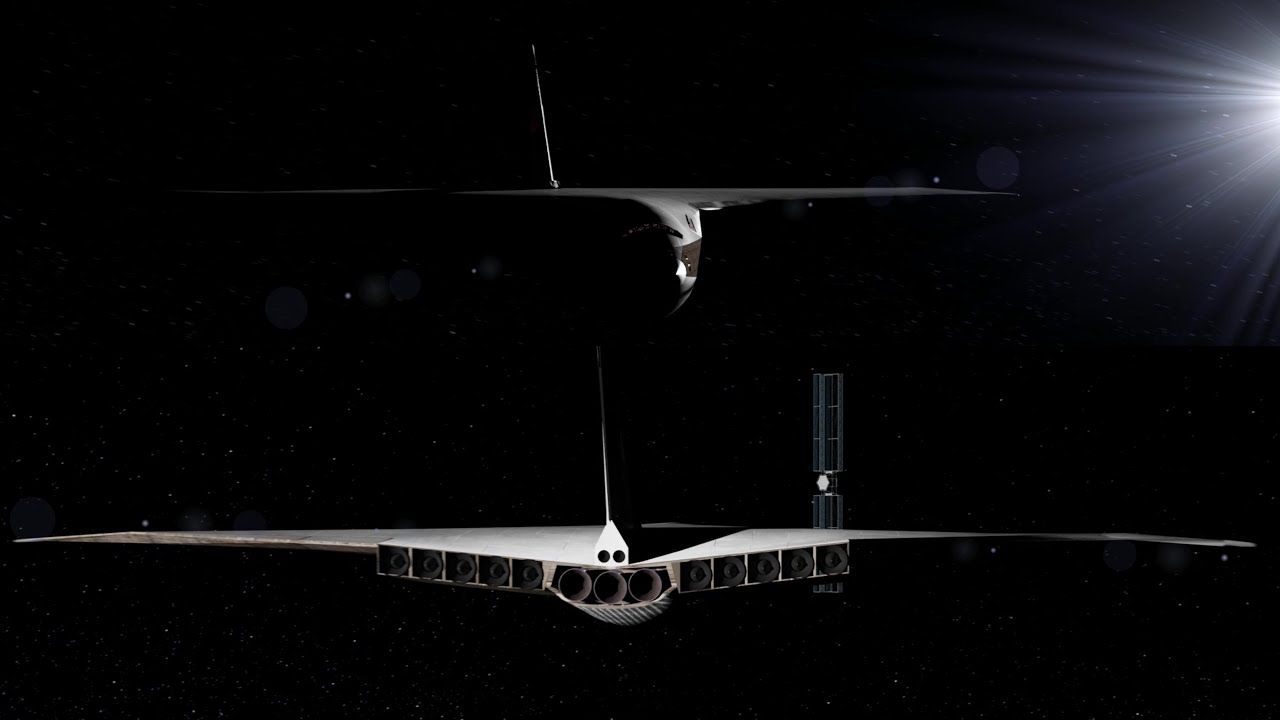A SCANALYZER post on 2021-05-31 discussed the Rockwell International 1979 concept study for Star-raker, an enormous horizontal takeoff, horizontal landing single stage to orbit (SSTO) spaceplace which could carry 100 tonnes to low Earth orbit (the same as Starship) and fly missons to orbit every 1.8 days. Star-raker was intended to meet the requirement from a NASA study of space solar power satellites built entirely from material launched from Earth that building such a system would require launching 1600 tonnes of payload a day into orbit.
Star-raker would be powered by ten turbo-ramjet engines, with three Space Shuttle Main Engine rocket engines used for the final boost into orbit. A fleet of 30 Star-rakers would meet the payload requirement. Estimated payload cost to orbit in 1978 US$ was 22–33 dollars per kilogram (around 100 2022 Biden-bucks per kilogram, again comparable to estimates for Starship, although Elon Musk has stated an ultimate goal as low as one tenth this price).
Here is a Hazegrayart animation of Star-raker operations, including arrival at the space power satellite build site, which dwarfs the 100 metre wingspan Star-raker.
This just made me think about the answer Musk gave about the Shuttle. He said the problem with the Shuttle was that humans had to fly it so you cannot experiment and gain experience and are reluctant to change anything.
Given planes can fly themselves, why couldn’t the Shuttle be flown by computer?
The shuttle could, in principle, be flown entirely by computer in normal circumstances. The ascent was entirely computer-controlled, although there was the ability for the crew to initiate abort modes in case of failures or inhibit abort modes which would otherwise occur automatically.
The descent and landing could also be flown automatically with the exception of lowering the landing gear, which had to be done manually. The reason for this is that the gear, once lowered, cannot be raised, and deploying it too early would result in loss of vehicle and crew. They didn’t trust this to be computer-controlled. After the Columbia loss, a kit was developed to allow the gear to be lowered by the computer which could be installed in a damaged orbiter to allow attempting a landing with no crew on board.
The Soviet Buran shuttle flew its single test mission entirely unmanned.
While the shuttle could easily fly to orbit and return unmanned, most of the on-orbit operations, such as deploying satellites, activating and monitoring experiments, and assembling space station components required a crew and were not designed to be operated from the ground.
Given an estimate of 32,500 tons for a power satellite, this transportation system could build a power satellite every 20 days. I am amazed that the thing is shown going all the way to GEO instead of using a tug from LEO to GEO. Even with refueling in the air, that’s a lot of delta V. The reentry from GEO would take some impressive heat shields. At least they got the transport cost in the right ballpark.
I suspect this is either just a misunderstanding by Hazegrayart of the mission mode or a deliberate mis-statement in order to be able to show the scale of the SPS compared to Star-raker. NASA’s original Space Transportation System architecture included a reusable Space Tug for transfers between LEO and GEO, and it would have made sense to develop it for this application. Also, I don’t think Star-raker going directly to GEO would be compatible with the 1.8 day turnaround between missions which was quoted for the system.
There may be more details in the full NASA 1979 solar power satellite definition study done by Boeing, Figure 7 seems to show transfer between LEO and GEO done by a separate Earth Orbit Transfer Vehicle, with the heavy launch vehicle performing the surface to LEO lift only.
